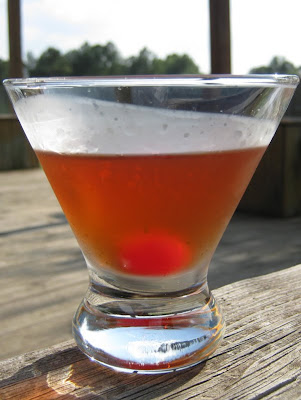2007 Ecco paperback edition with updated forward and interview at the end
$10, 312 pages.
My copy of this book looks like hell. Not because I've read it that often, or because friends have abused it, or it got damaged while I kept it near the stove like some religious talisman.
It looks like hell because, mere hours after receiving it from my boss on a business trip to Cleveland, Ohio, it and the rest of my luggage sat in the rain on the tarmac as my flight got cancelled and I looked forward to a short stay in a nearby hotel.
 About an hour after finding out that my plane wasn't taking off, and this was around midnight, a young female ramp agent came into the terminal with my luggage. It was dripping water, but she was more soaked than my bag. Before she could say anything, I thanked her for bringing my bag, and asked for her supervisor's name because I wanted that person to know how much I appreciated her getting it to me so that it wasn't lost in the system overnight. A handshake turned into a hug, and she broke down into deep, full-body sobs. She didn't have to say anything. I knew that she'd been yelled at and cussed at and on top of all the verbal abuse, had run around on concrete during a thunderstorm for the sole purpose of getting me my luggage.
About an hour after finding out that my plane wasn't taking off, and this was around midnight, a young female ramp agent came into the terminal with my luggage. It was dripping water, but she was more soaked than my bag. Before she could say anything, I thanked her for bringing my bag, and asked for her supervisor's name because I wanted that person to know how much I appreciated her getting it to me so that it wasn't lost in the system overnight. A handshake turned into a hug, and she broke down into deep, full-body sobs. She didn't have to say anything. I knew that she'd been yelled at and cussed at and on top of all the verbal abuse, had run around on concrete during a thunderstorm for the sole purpose of getting me my luggage. My father once loaded bags on airplanes, and I can remember him coming home soaked in sweat, rain, and aviation gasoline. No matter how hard you work, there will still be bags that get scuffed, soaked, or even lost. It's natural to be frustrated with this, but don't take it out on the poor guys that are out there every night, exposed to the elements, breathing jet exhaust and slowly suffering hearing damage.
I bring all of this up because, although Kitchen Confidential is notorious for its celebration of sex and drugs and rock and roll, the real message is that it is all about the guys who are sweating, grunting, and getting burned and cut behind the kitchen's swinging door.
It's been 11 years since the book came out, and while I read it then, I've read it every two or three years since. I gave away my original copy, got it from the library once, and now have this memorable version. I think it still holds up pretty well, though it's funny to watch the career trajectory of Bourdain since then. He's no longer counting potatoes every morning, but has hosted a variety of food and travel shows. He's become a blogger. He's dialed back his attacks on some of the Food Network personalities while ramping up others, and recently took on the James Beard Awards, and his tweets are mashed up with those of Ruth Reichl for the bizarre Warhol-esque creation Ruth Bourdain.
The book is still well worth reading, because despite the humor and violence and other fun bits, it's part of a significant trend that has been going on for the past 15 years or so: going behind the scenes. For most movies, we now have the option to watch deleted scenes, interviews, or watch the movies with the commentary of the director and actors. There are shows like Dirty Jobs and How It's Made that show industrial processes or the labor required to perform tasks you may never have thought of before. The cable channels abound with shows about loggers, crab fishermen, ice road truckers, and others. Used to be that maybe a relative or a friend took you on a factory tour to show you how washing machines were put together. Now there are hundreds of such opportunities available without leaving home.
I'm not expecting everyone to mentally hear Aaron Copland's Fanfare for the Common Man every time they order dinner or get an oil change, but I'd like to think that the massive curiosity and interest in the background processes that keep the country moving might lead to a new era of respect and civility. Or perhaps folks will continue to demand their steaks cooked into charcoal briquettes and then berate the waitress into tears before leaving without a tip. But one can hope.





























